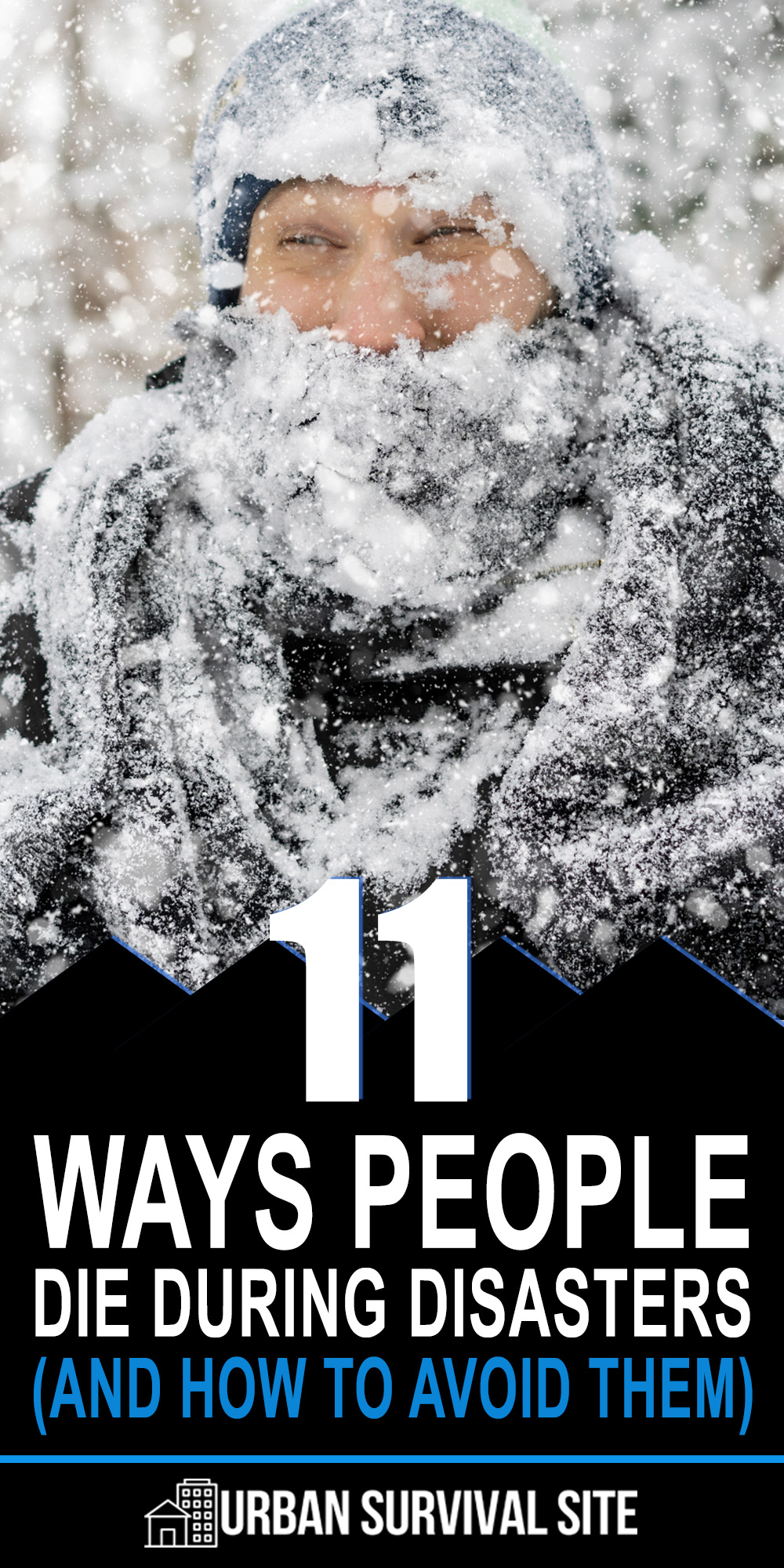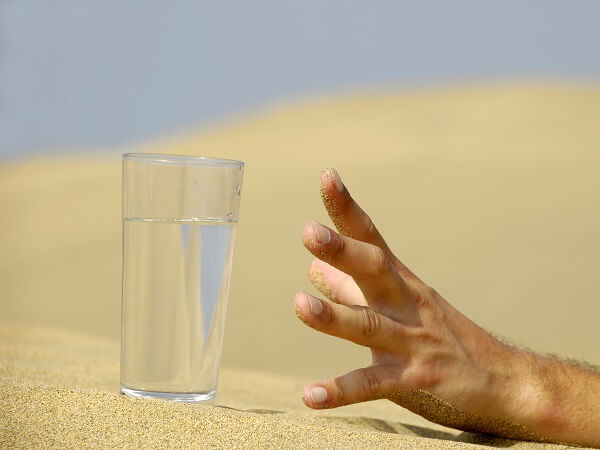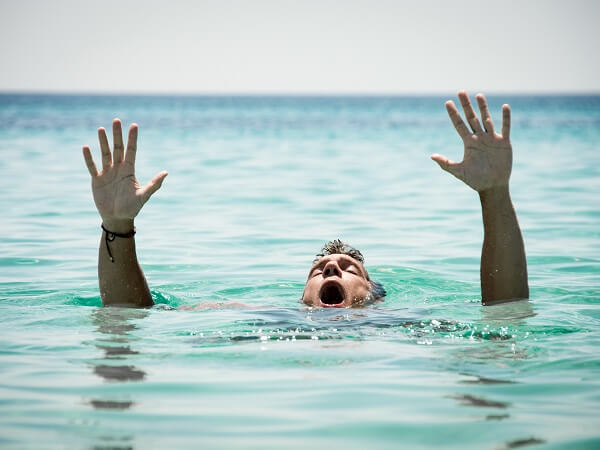The article 11 Ways People Die During Disasters (And How To Avoid Them) See more on: http://www.totalsurvival.net/


 In the aftermath of a major disaster, danger comes in many forms. In fact, the many threats that one must contend with after a disaster can be even more deadly than the disaster itself. For example, imagine surviving an earthquake or hurricane, only to be taken out by murderous looters the next day.
In the aftermath of a major disaster, danger comes in many forms. In fact, the many threats that one must contend with after a disaster can be even more deadly than the disaster itself. For example, imagine surviving an earthquake or hurricane, only to be taken out by murderous looters the next day.
Below, we’ll cover some of the many ways people will die during and after a major disaster, as well as what you can do to avoid falling victim to these threats. This post may be a little morbid, but if we want to be as prepared as possible, we have to consider every scenario.
Want to save this post for later? Click Here to Pin It on Pinterest!
1. Disease and Infections
In the 21st century, we often take the advances of modern medicine for granted. When conveniences such as antibiotics and hospital visits are no longer an option, though, many people will succumb to deadly diseases and infections that otherwise would have been treatable.
Avoiding disease and infection is the best safeguard after a disaster, and to do that, you’ll need to keep yourself and your home as clean as you can. However, it’s also essential to stockpile what medicines and first aid supplies that you can in case disease is unavoidable. To learn more about first aid supplies, here’s how to make a first aid kit.
2. Starvation
The vast majority of people are not self-sufficient, meaning they rely on stores and markets to get their food. If a major disaster prevents the stores in the area from restocking, a frightening number of people are going to die from starvation.
Having a food stockpile is the best way to ensure you don’t go hungry after a disaster. Having the supplies and skills to plant a survival garden is highly recommended as well.
For more information on avoiding starvation after a disaster, check out our beginner’s guide to emergency food storage.
3. Dehydration
Water may seem much more plentiful than food, but there’s a big difference between having water available and having water that is safe to drink. When the tap isn’t running anymore (or it’s putting out water that is contaminated), many people won’t be able to find another source of safe drinking water.
By far the most effective way to ensure that you have drinkable water available is to learn how to store drinking water, along with how to purify water. To learn more, check out our list of ways to purify water.



4. Hypothermia
Electricity is often one of the first things to go in a major disaster. Without electricity, many people will be left unable to heat their homes. In colder parts of the country, the inability to heat a home can be deadly.
If this happens to you, you’ll have to find some creative ways to keep warm. In case you get stranded in your car without a heater, here’s how to stay warm in your car.
5. Hyperthermia
The opposite of hypothermia, hyperthermia occurs when your body temperature climbs too high. For all the same reasons that hypothermia can be deadly in cold climates, hyperthermia can be deadly in hot climates.
For tips on how to avoid and treat hyperthermia, check out this guide to staying cool without AC. Also be sure to store lots of water so you can stay hydrated.
6. Murder
Desperate situations can make people do desperate things, and there are plenty of people who will kill to get what you have, especially if they’re starving. There will also be people who see the breakdown of law and order as a free pass to commit crimes, including murder.
Going outside of your home after a major disaster should be avoided if at all possible. If you must go out, it’s a good idea to go armed. It’s also worth noting that good situational awareness can often be the most effective self-defense weapon. Keep your head on a swivel and be careful who you trust. When the fabric of society breaks down, the consequences are often messy.
For more information on protecting yourself after a disaster, check out this list of guns for home defense and this list of home security tips.
7. Radiation Poisoning
In many ways, the aftermath of a nuclear bomb can be just as devastating as the explosion itself. Even those well outside the blast radius can succumb to radiation poisoning from the fallout.
The nuclear weapons in the arsenals of major superpowers such as Russia and the United States are much “cleaner” than they used to be, meaning they produce less nuclear fallout. However, these weapons still present a radiation threat, and more rudimentary nuclear weapons launched from a country in the early stages of becoming a nuclear power (such as Iran or North Korea) could be especially dangerous in terms of radiation.
What’s worse is that radiation can linger in an area for years after a nuclear bomb goes off, putting anyone who travels through that area at risk.
Avoiding going anywhere near a nuclear blast site is the safest bet. If you must travel through a radiation zone, though, it is essential to take precautions such as wearing protective gear and using a Geiger counter to measure the radiation levels. For more information on protecting yourself after a nuclear detonation, here’s how to avoid radiation poisoning.
8. Drowning
Disasters such as hurricanes and floods can bring an enormous amount of water down on an area. And where there is water, there is risk of drowning.
Even strong swimmers are often unable to avoid drowning when they are caught in rushing floodwaters. Between the strength of the current, the debris that it is tossing around, and the fact that there might not be any dry land nearby, the risks of drowning are high.
Getting to high ground, or at least the roof of your home, will often be the only recourse you have while waiting for the waters to recede. Remember, no matter how well you can swim, you should never try to swim through floodwaters. For more information on surviving a flood, check out this article.



9. Electrocution
Electrocution isn’t typically a threat that most people have to worry about. In the wake of a major disaster, though, it becomes much more of a risk.
Downed power lines are one reason for concern. If the ground is wet, stepping anywhere near a downed line could lead to electrocution.
Another electrocution risk factor after a disaster is DIY electrical repairs. If you are going to try and repair anything electrical in your home, it’s essential to know what you are doing, as one mistake could prove deadly.
To avoid electrocution after a disaster, keep a careful lookout for any downed power lines and take precautions when performing electrical repairs. Here is how to treat electrocution.
10. Carbon Monoxide Poisoning
If the power goes down after a disaster, many people will turn to generators to keep the lights on. While a portable generator is certainly a great piece of equipment to have, it can prove deadly if used incorrectly.
Moving your generator inside may seem like the only way to keep it from being stolen. Without a proper ventilation system, though, the lethal carbon monoxide from the generator’s exhaust can fill your home. In some situations, exhaust from the generator can get inside your home even if the generator is outdoors. Since carbon monoxide is invisible and odorless, it is an especially dangerous threat.
Keeping your generator outside of your home is by far the safest option. If you are committed to keeping your generator from being stolen, though, it is essential that you create a fully effective ventilation system that directs all of the generator’s fumes outside. You will also want to have carbon monoxide detectors installed in your home.
Another way that people will succumb to carbon monoxide poisoning is during bug out situations where they are living out of their car. It’s never a good idea to spend long periods of time in your vehicle while it is stopped and running. While doing so may be relatively safe in most situations, you can never be too careful.
11. Accidental Injury
During and after a disaster, the risk of injury is high. Many disasters can weaken or destroy infrastructure, from the home you live in to the bridges you drive on. This creates a number of risks such as falling or being crushed.
The chaos that ensues after a disaster amplifies the risk of accidents as well. Driving is dangerous enough under normal circumstances, but in a scenario where everyone is panicked, distracted, and desperate, deaths due to automobile accidents are guaranteed to skyrocket.
Of course, simply trying to survive opens you up to the risk of injury. Surviving the aftermath of a disaster often forces you to take risks that you wouldn’t normally take – from scaling a building in search of an entrance to digging through rubble in search of survivors and everything in-between. All of these activities mean that the risk of having an accident will be high. Since even minor injuries can prove lethal in a world without medical care, it is especially important to take precautions.
A first aid kit is an essential part of any survival stockpile. In addition to keeping a first aid kit around to treat minor injuries, you’ll also want to learn and practice first aid skills.
For more information here’s how to build an emergency first aid kit from scratch.
Like this post? Don’t forget to Pin It on Pinterest!
This article first appeared on urbansurvivalsite.com See it hereRead Full Article Here: 11 Ways People Die During Disasters (And How To Avoid Them)

No comments:
Post a Comment